Catch Them If You Can
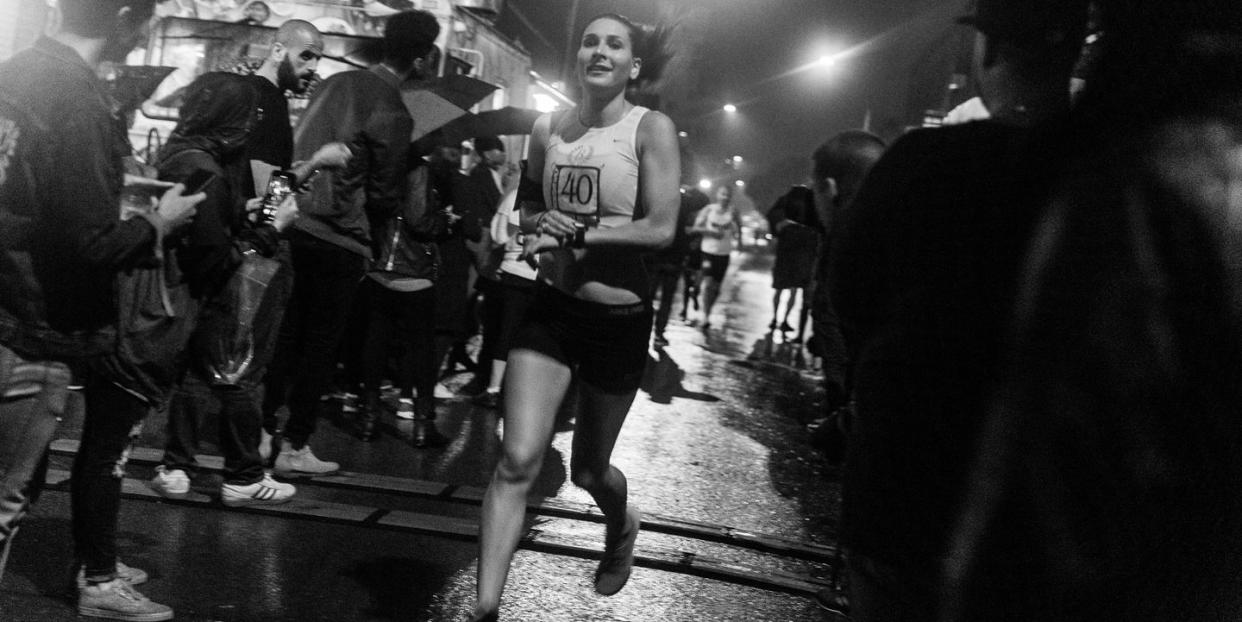
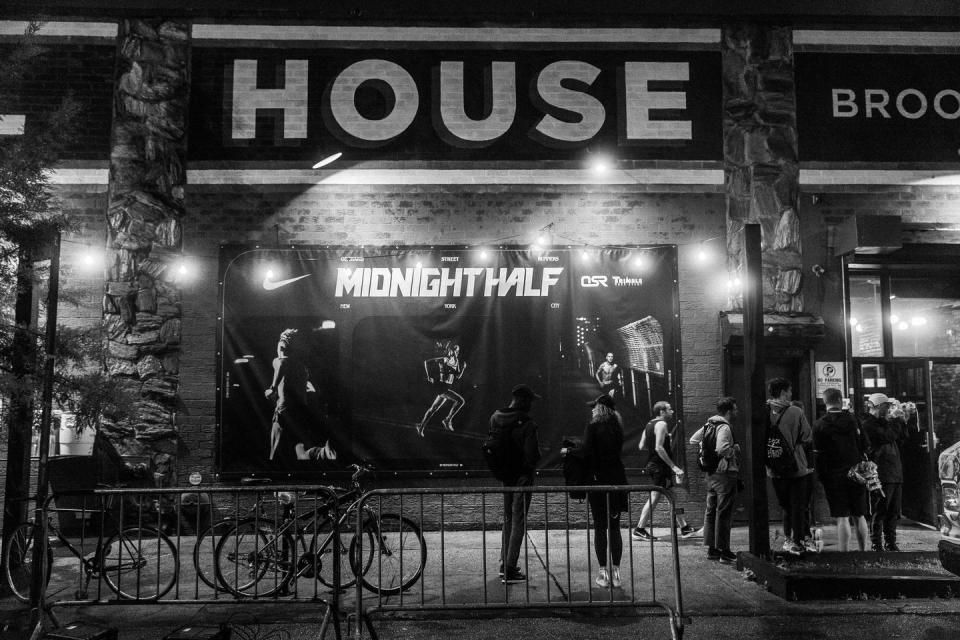
On any given day, 7th Street and 2nd Avenue is a deserted corner of the Gowanus neighborhood in Brooklyn. Orange construction drums and a few parked buses and semi-trucks dot littered and cracked asphalt. It’s a no man’s land for most New Yorkers. But it was an appropriate landscape for the Midnight Half, arguably the city’s most atypical footrace.
What would otherwise have been an unassuming Thursday night here was anything but on May 30. More than 200 mostly local runners huddled around murky puddles after an intense thunderstorm cleared just in time for the women’s start at 11 p.m., 10 minutes before the men.
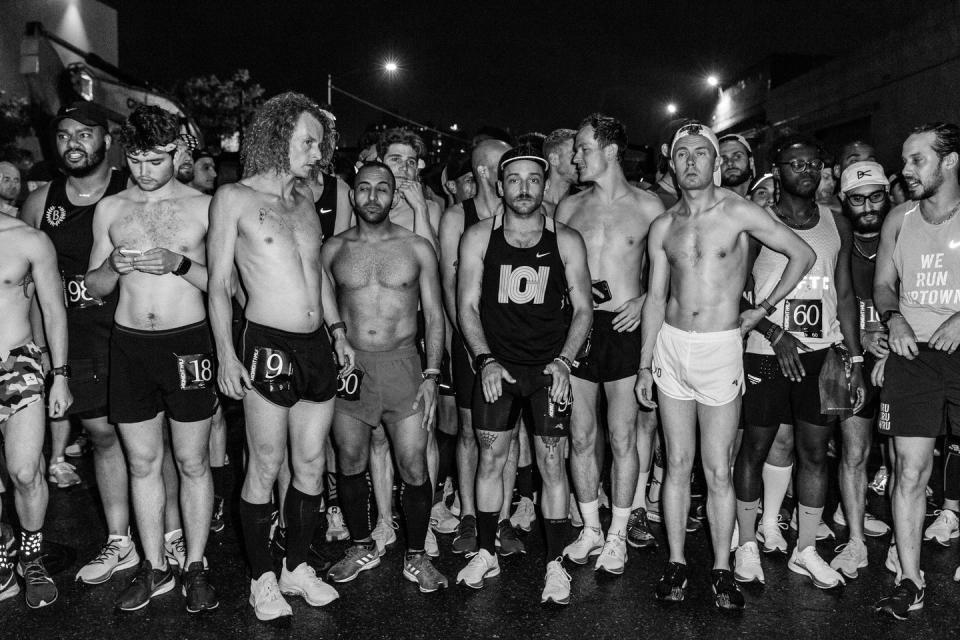
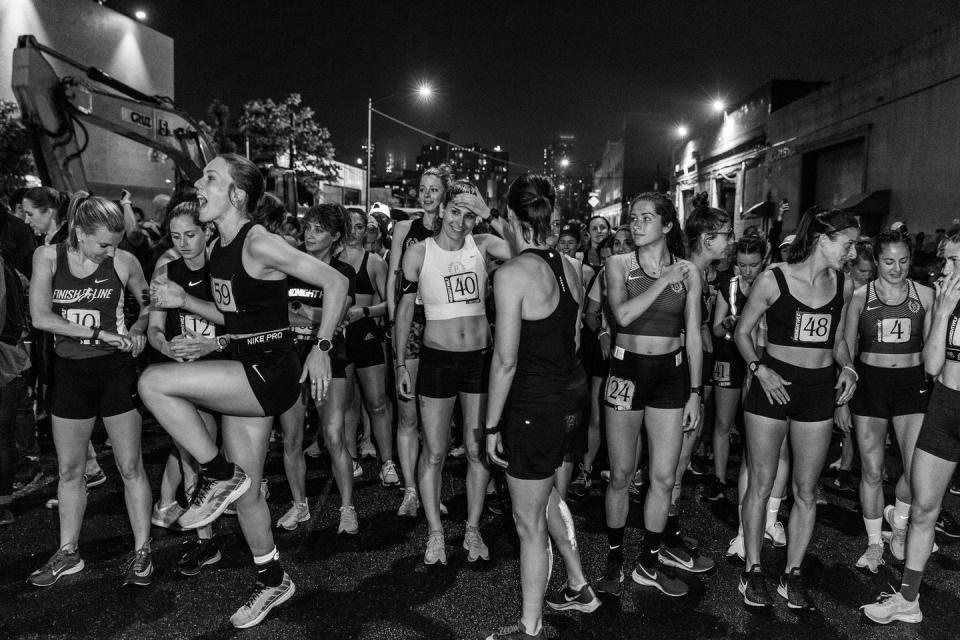
Those familiar with the Midnight Half describe it as wild and intimidating. Red Hook Criterium race director David Trimble in collaboration with Joe DiNoto, founder of Lower East Side group Orchard Street Runners, modeled the event after alleycats- races rooted in the local bike messenger scene where competitors design their own routes to predetermined checkpoints between the start and finish. The Midnight Half is essentially a scavenger hunt that interrogates runners’ street knowledge while demanding speed and grit. Participants have finished in under 13.1 miles, but some have clocked more than 14.
A start/finish line mat at The Bell House, the race headquarters and also one of the eight checkpoints in the race, was used to track the fastest prologue, which was new to the Midnight Half this year. The runners had to cover a mile-long loop before the official race start, and $500 was awarded to the fastest person who also went on to complete the course.
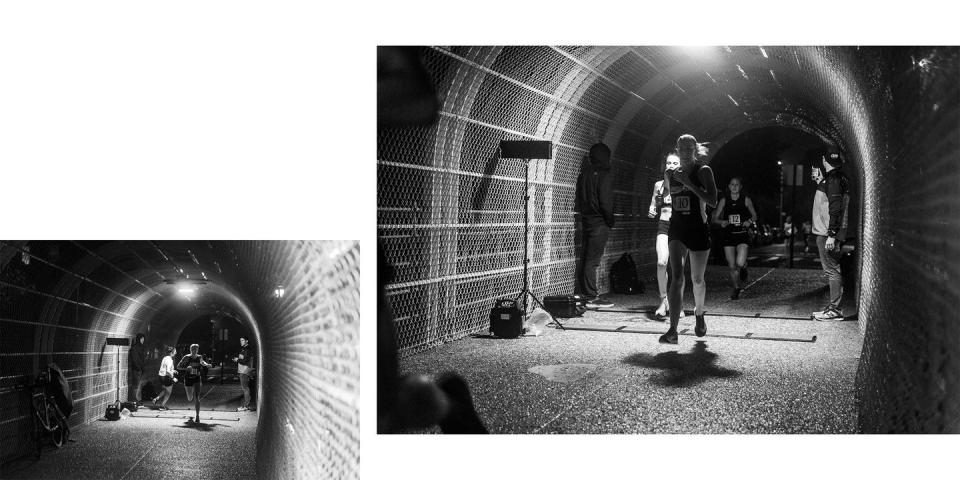
To track the actual Midnight Half, six remote timing mats are located at checkpoints throughout Brooklyn, which helps prove runners actually make it to each one. Though checkpoints must be run in order, “it’s an exploratory adventure where it’s out of the comfort zone for a lot of people,” DiNoto said.
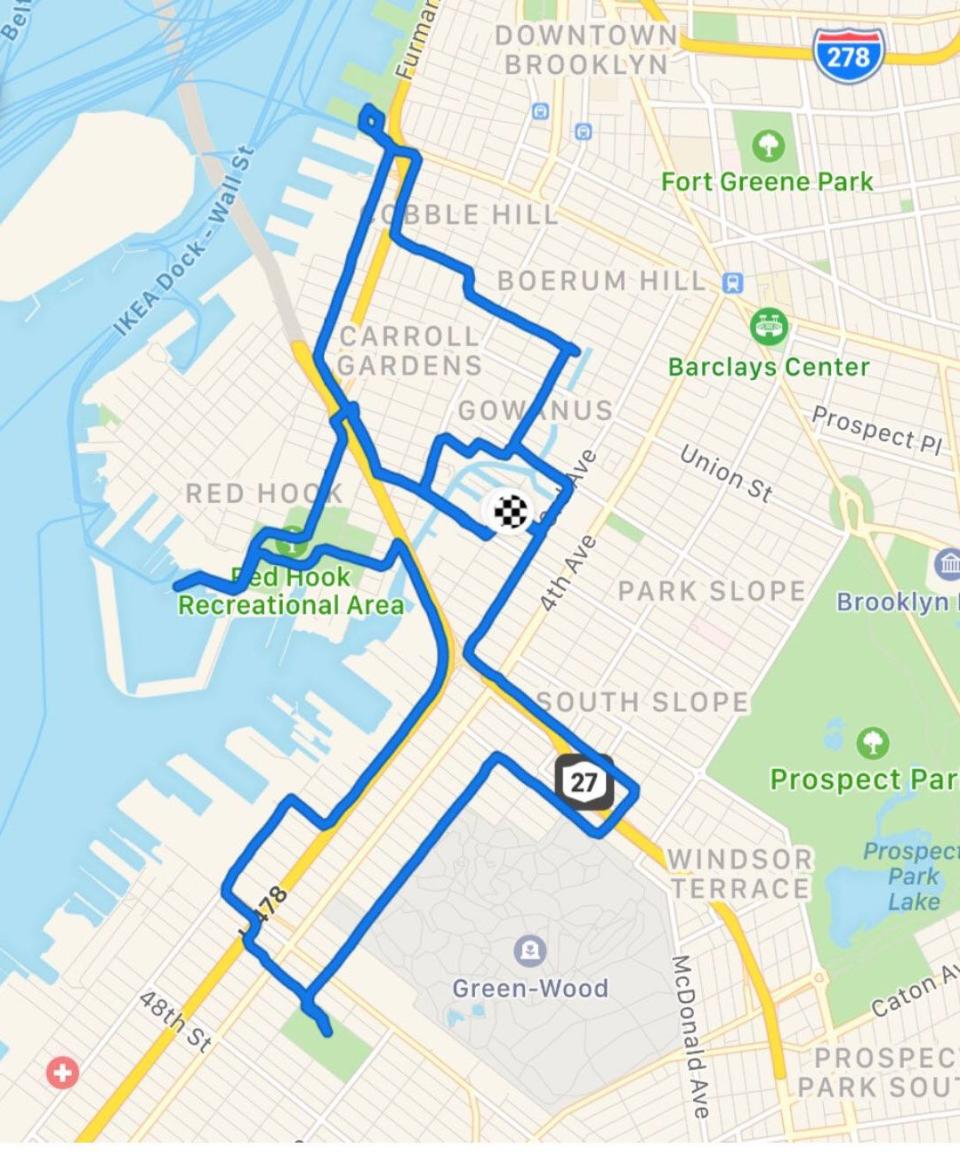
Adds Trimble, “People are less worried about setting a PR or how their time compares to their last half marathon. The race isn’t about that. It’s about how well you plan your route and having fun.”
No permits, no street closures, and runners assume all risk as they hunt remote areas, like Brooklyn Bridge Park between Piers 5 and 6, roughly a mile from the nearest subway station; or along an industrial backstreet tucked behind Industry City. Trimble says race success depends on strategy. Runners have freedom to scheme creative shortcuts, like when 2016 winner Dave Knowles, a local elite and former member of the New York Athletic Club who has run as fast as 1:08:40 for a half marathon, cut through the fence of a basketball court. The move afforded him a leg up on faster competitors.
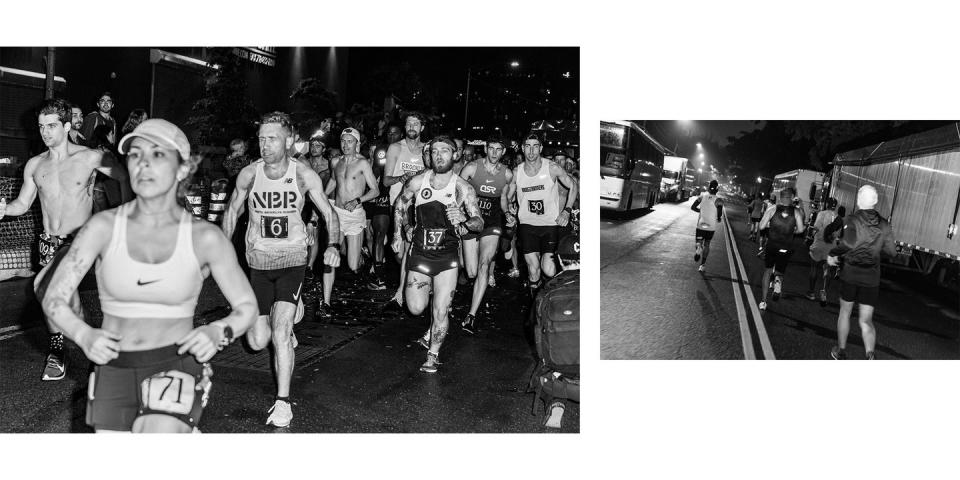
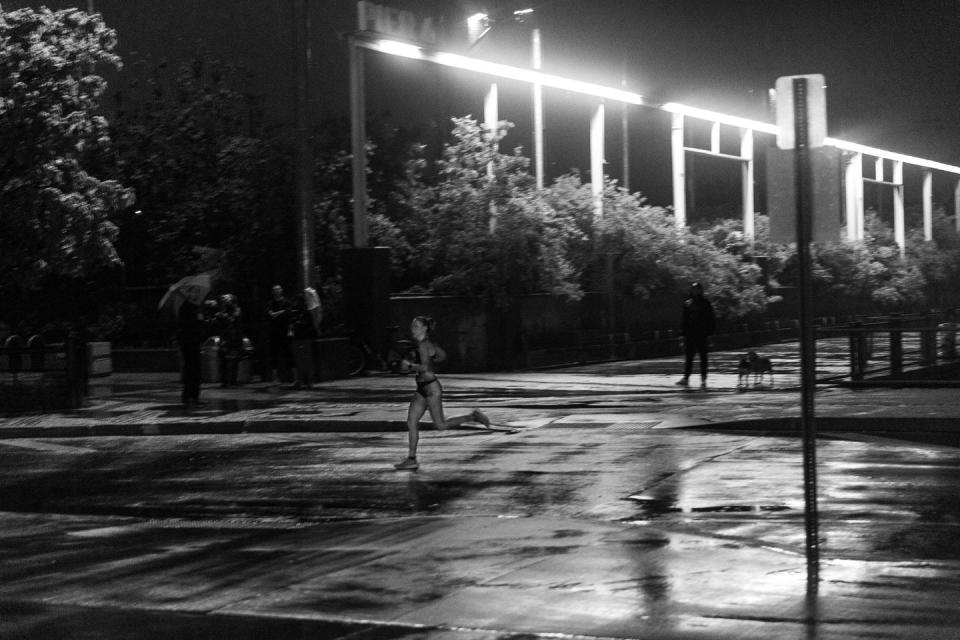
“When Dave Knowles won, from that point forward he was pretty much known as the route guru. He had taken down a titan (New York Athletic Club member Jerry Faulkner, a 2:21 marathoner) who’s known for speed,” DiNoto said.
The fastest mile winner receives $500, and the overall half winner also receives $500. The top 10 all receive payouts, though the race is not about money, or the top three medals made out of solid brass by David Trimble’s uncle. This year’s winner, Jordan O’Donoghue, a member of New York’s Dashing Whippets Running Team, said the Midnight Half is really “a purer form of running” that challenges the mind as much as the body. “It’s a completely different scenario [compared] to anything out there,” he said.
But for those less savvy, the race can be a gamble. This year, Nicolaï Hokhloff, a triathlete who flew in for his first Midnight Half jet lagged after a red eye flight from Paris, admitted he hadn’t studied a map. His saving grace, he said, was simply hanging on to the lead pack. “I thought, ‘You crossed the ocean for this shit, so get on the podium.’”
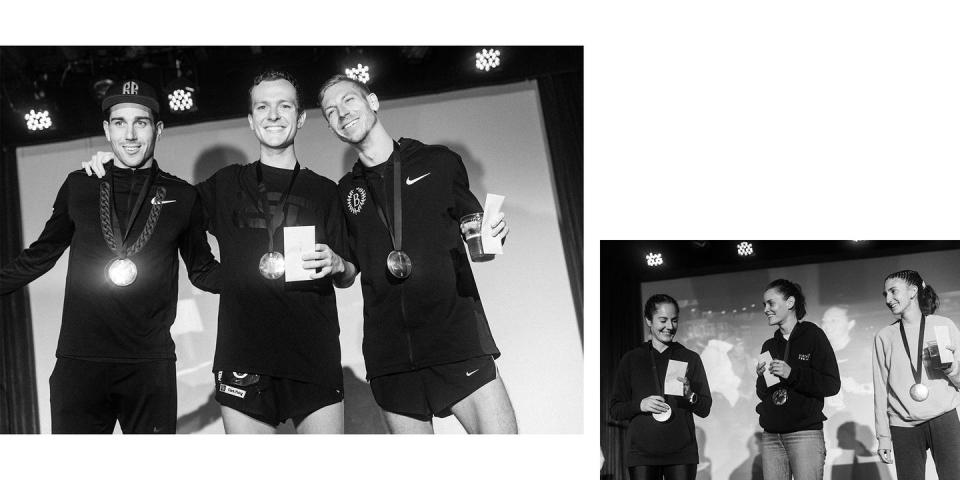
Hokhloff’s second-place finish (a $300 award) surprised the field as much as himself. “A lot of people have power and strength and running talent, but don’t want to be a part of commercialized races-not that there’s anything wrong with them,” DiNoto said. “Our races draw out these dark horses that have some kind of interesting dynamic to offer.”
Since the first Midnight Half participation has quadrupled-from 53 finishers in 2012 to more than 200 for the 2019 edition, resurrected in partnership with Nike NYC after a two-year hiatus. Registration, approximately $75 and limited to 230 spots, sold out immediately.
The field has always attracted a pageant of athletic abilities, ranging from marathon Olympic Trials qualifiers Caitlin Phillips (the 2018 Midnight Half champion) and Leigh Anne Sharek, both New Yorkers, to self-described casual runners hoping to understand why the race has earned its no-mercy reputation.
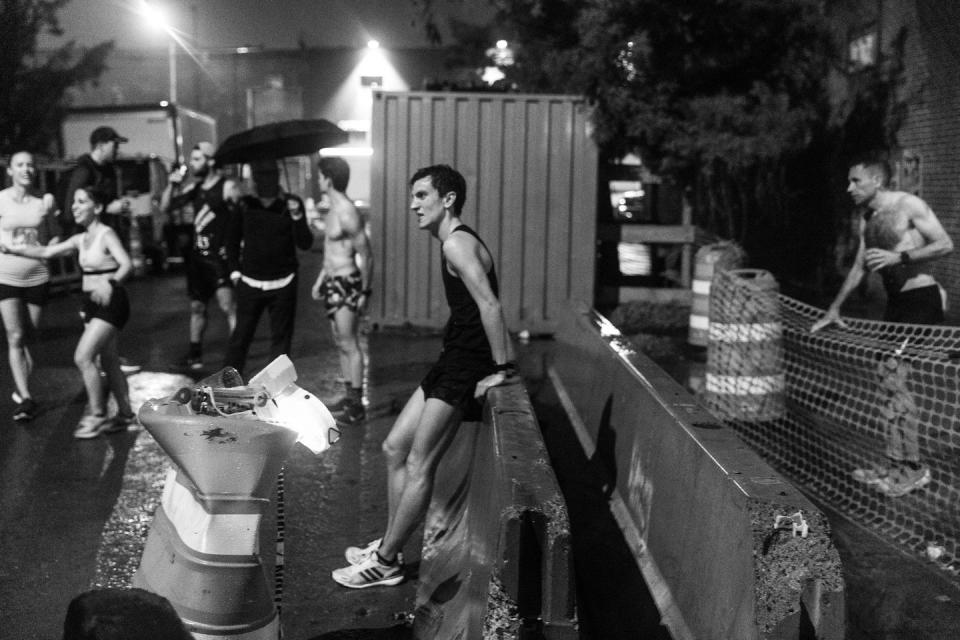
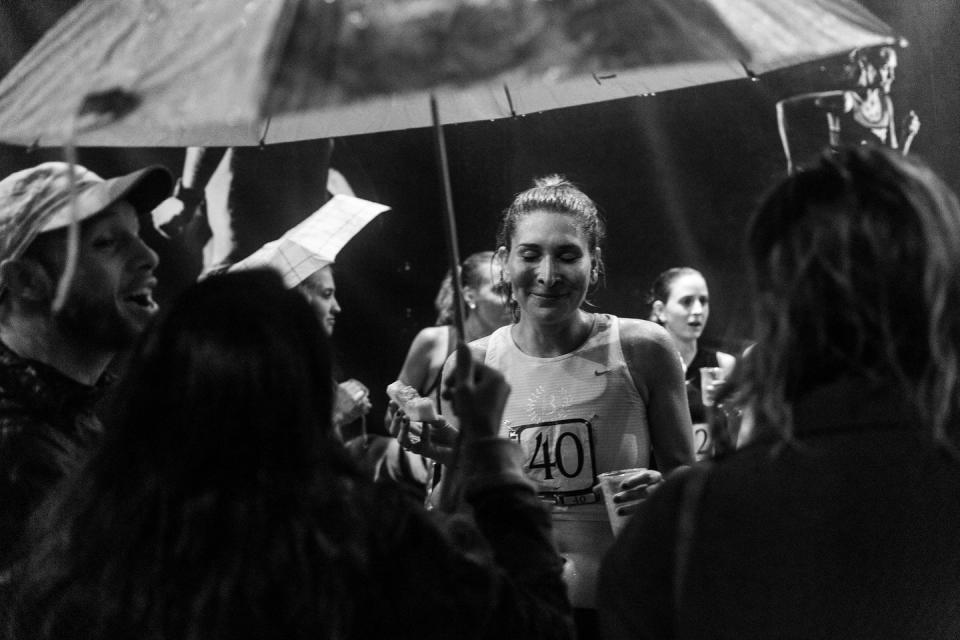
“I was more nervous about this race compared to a traditional road race,” said Sharek, a 2:41 marathoner. “This is where I want to do my best. It’s a street cred thing.”
('You Might Also Like',)

